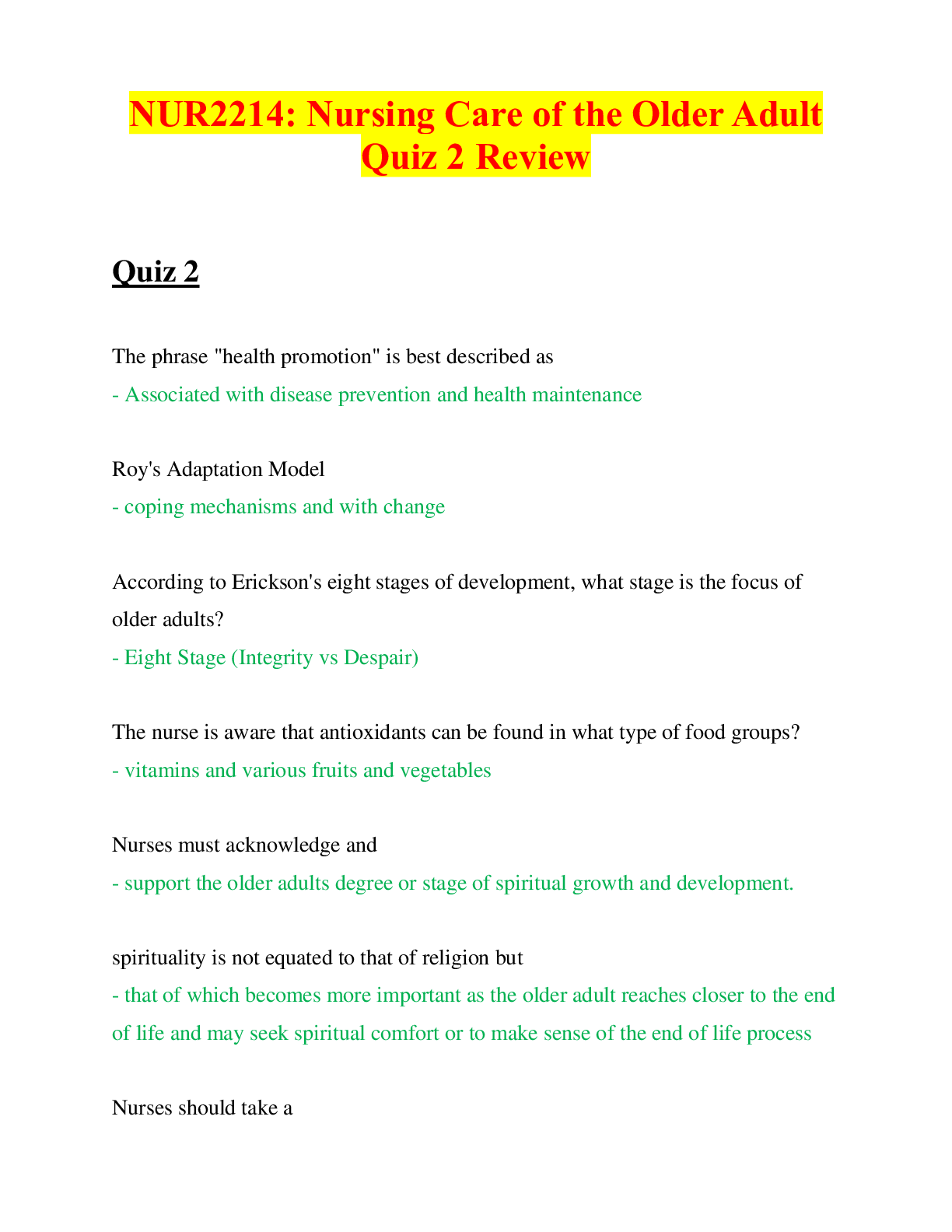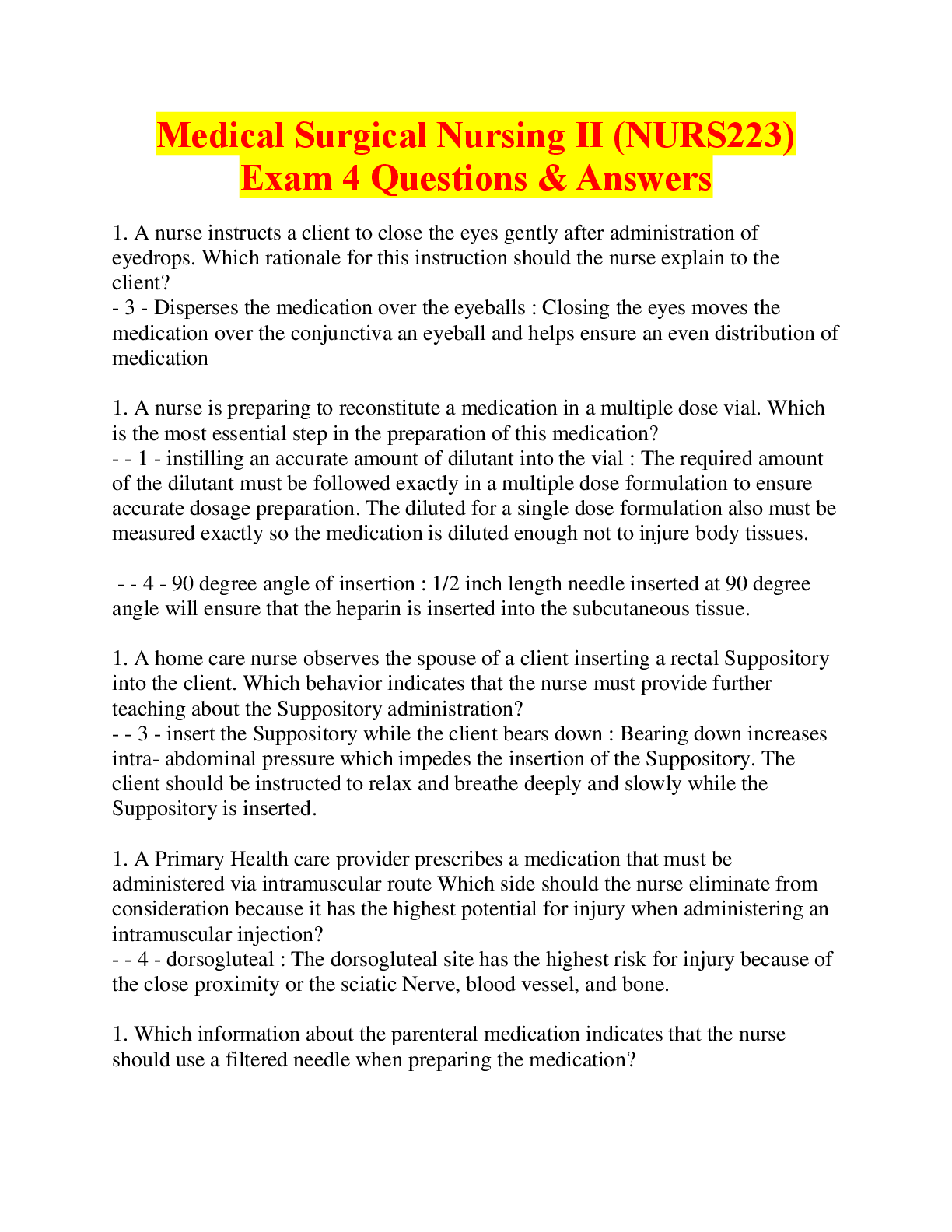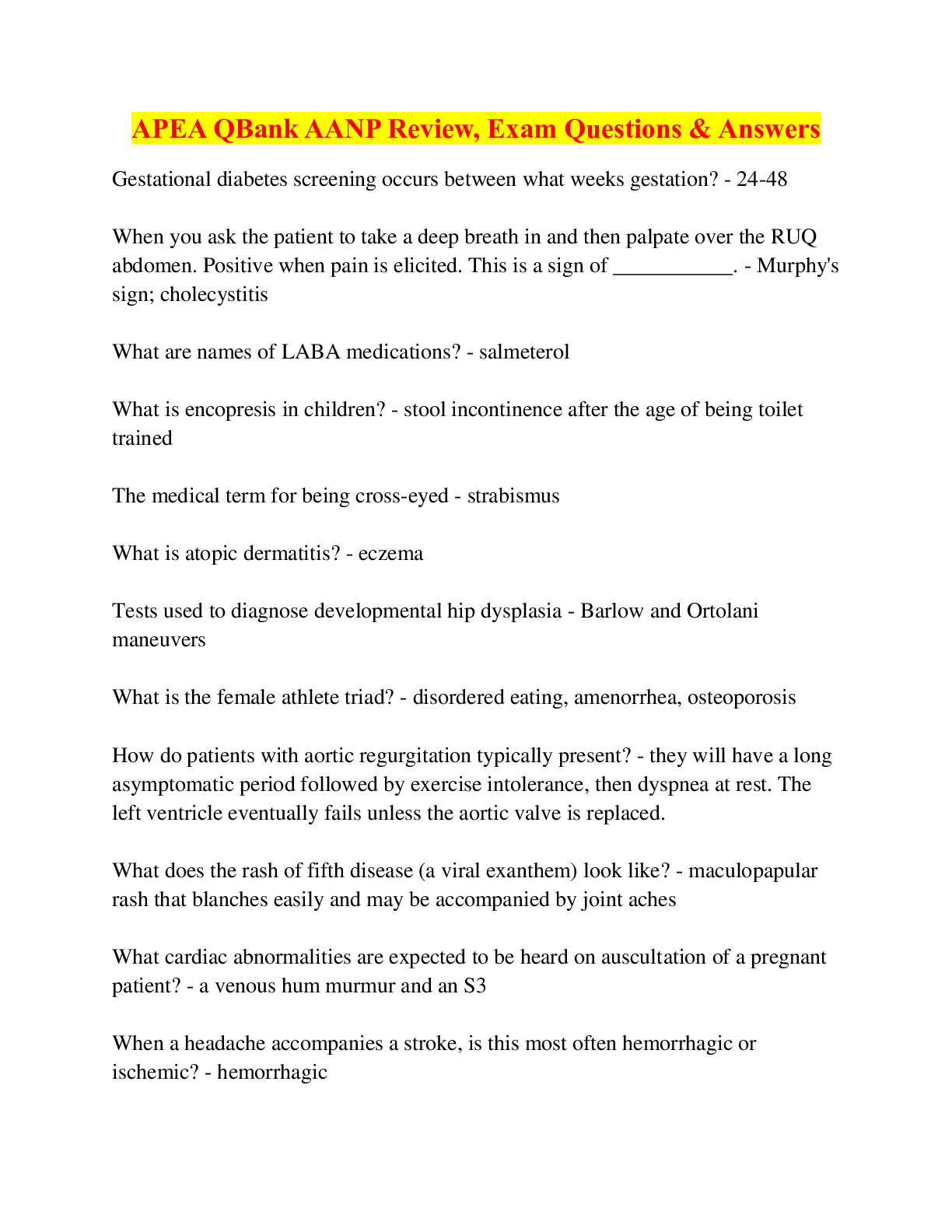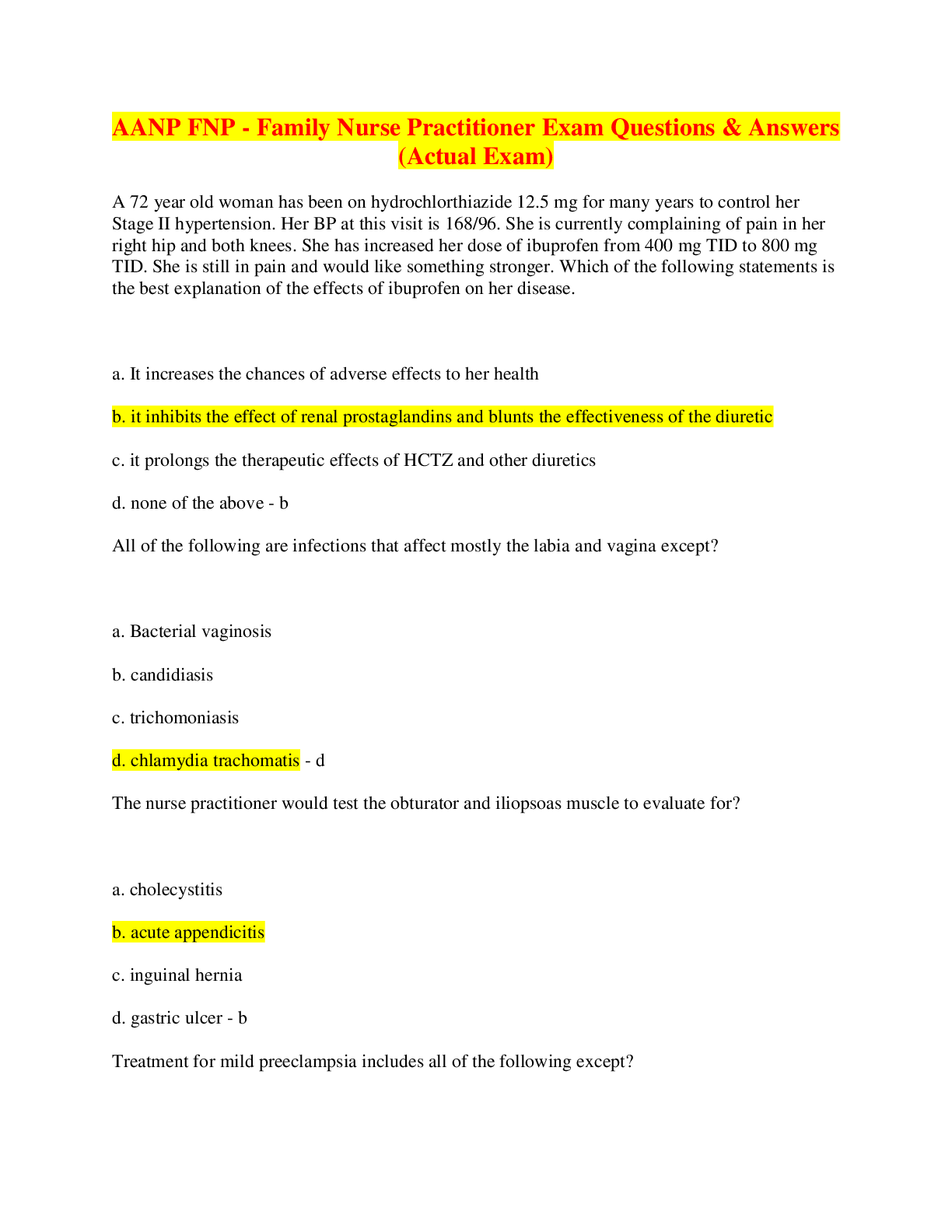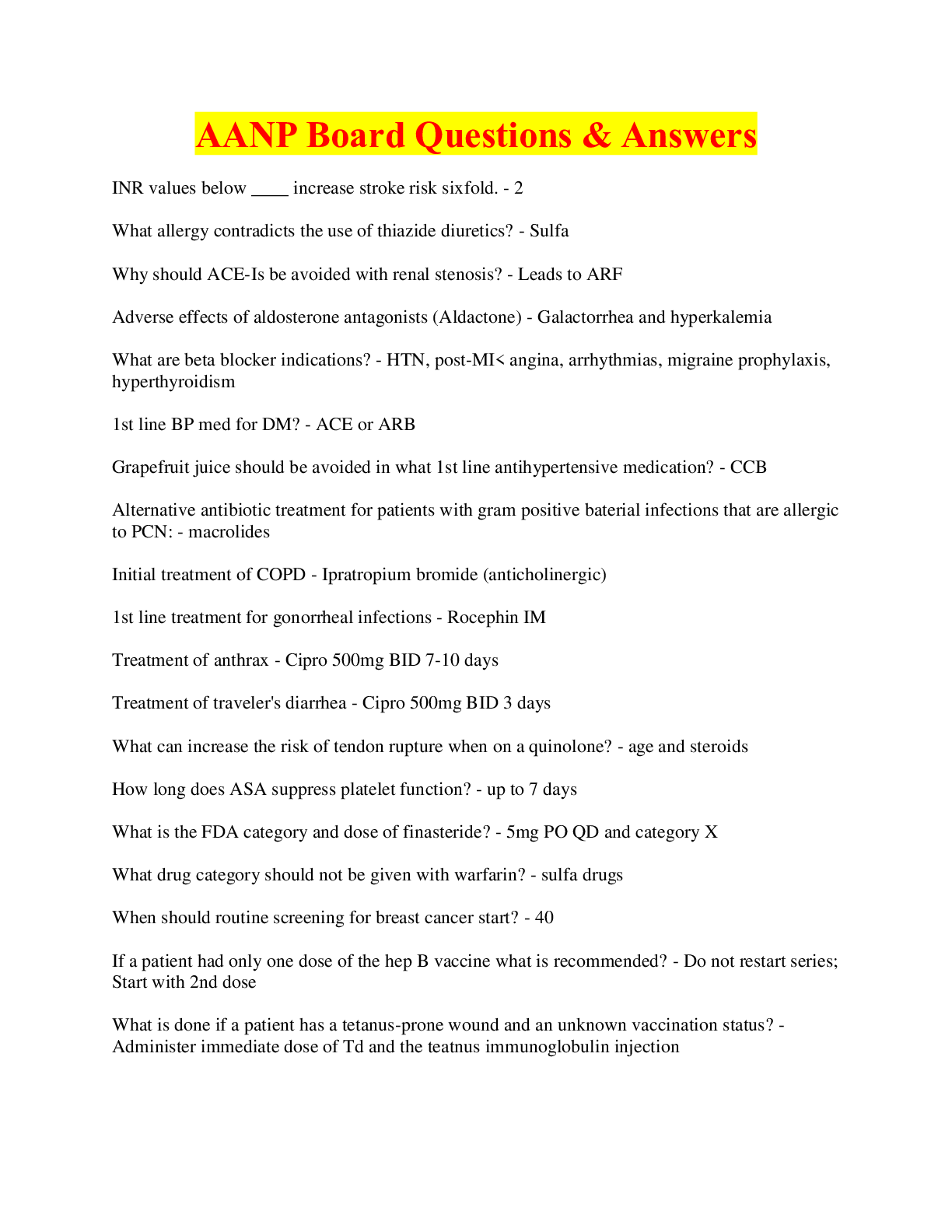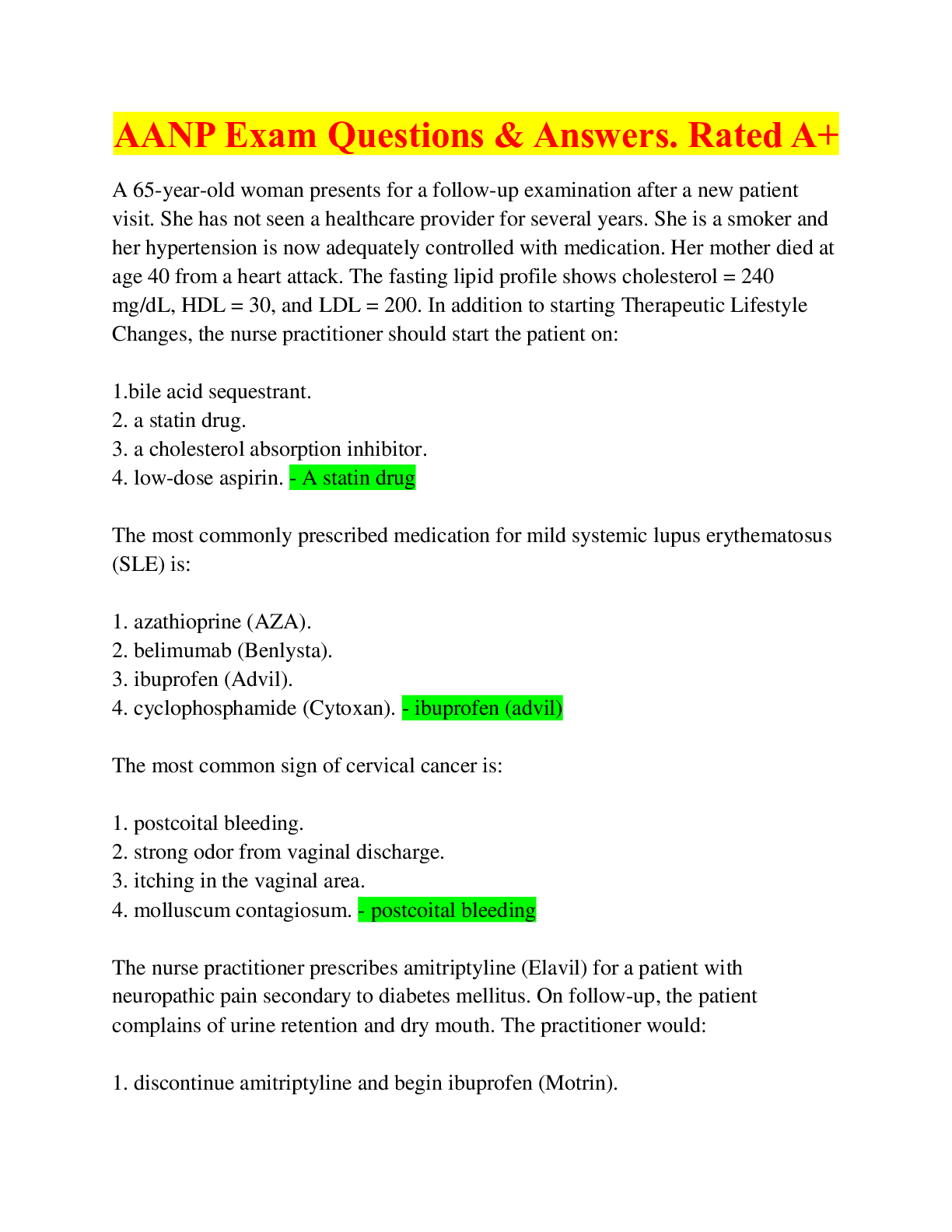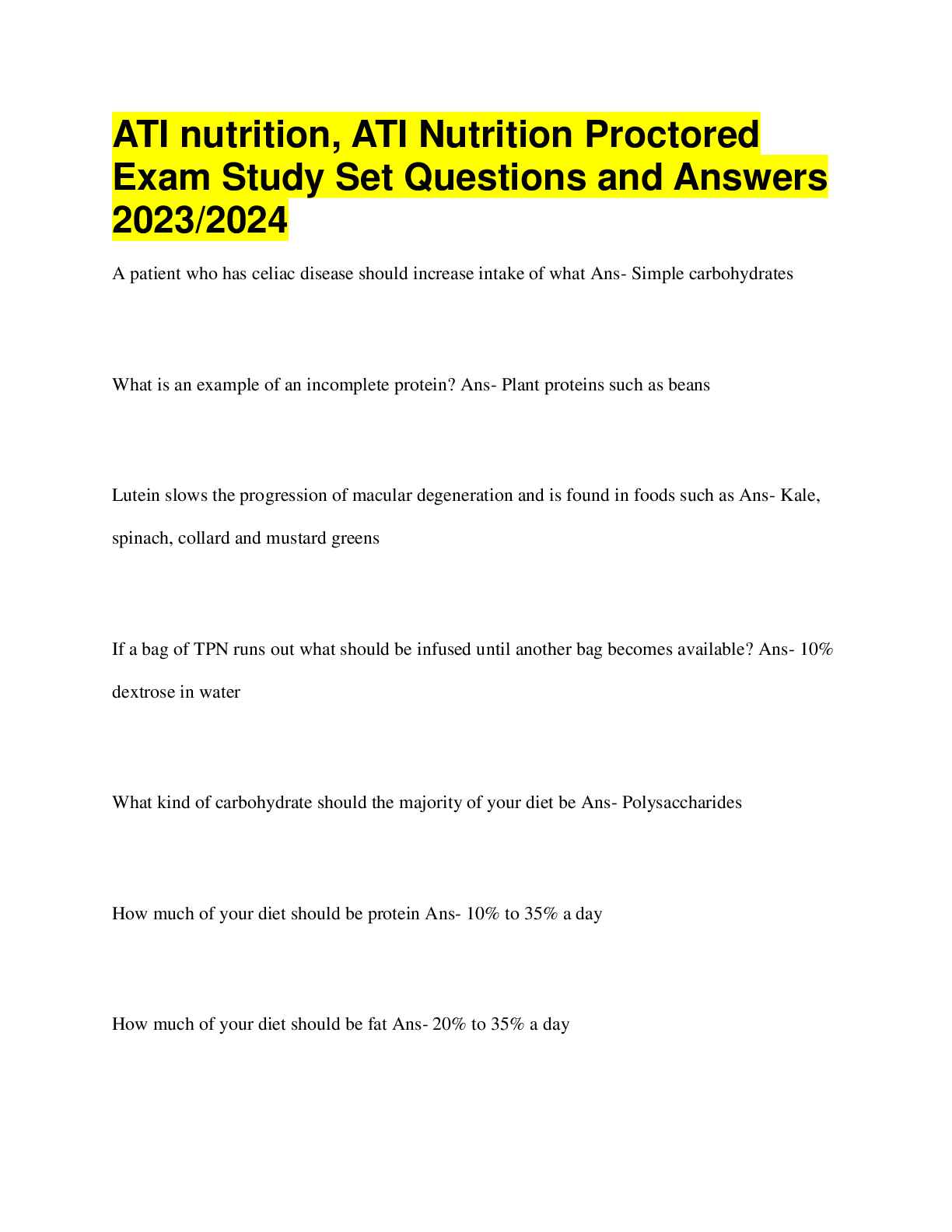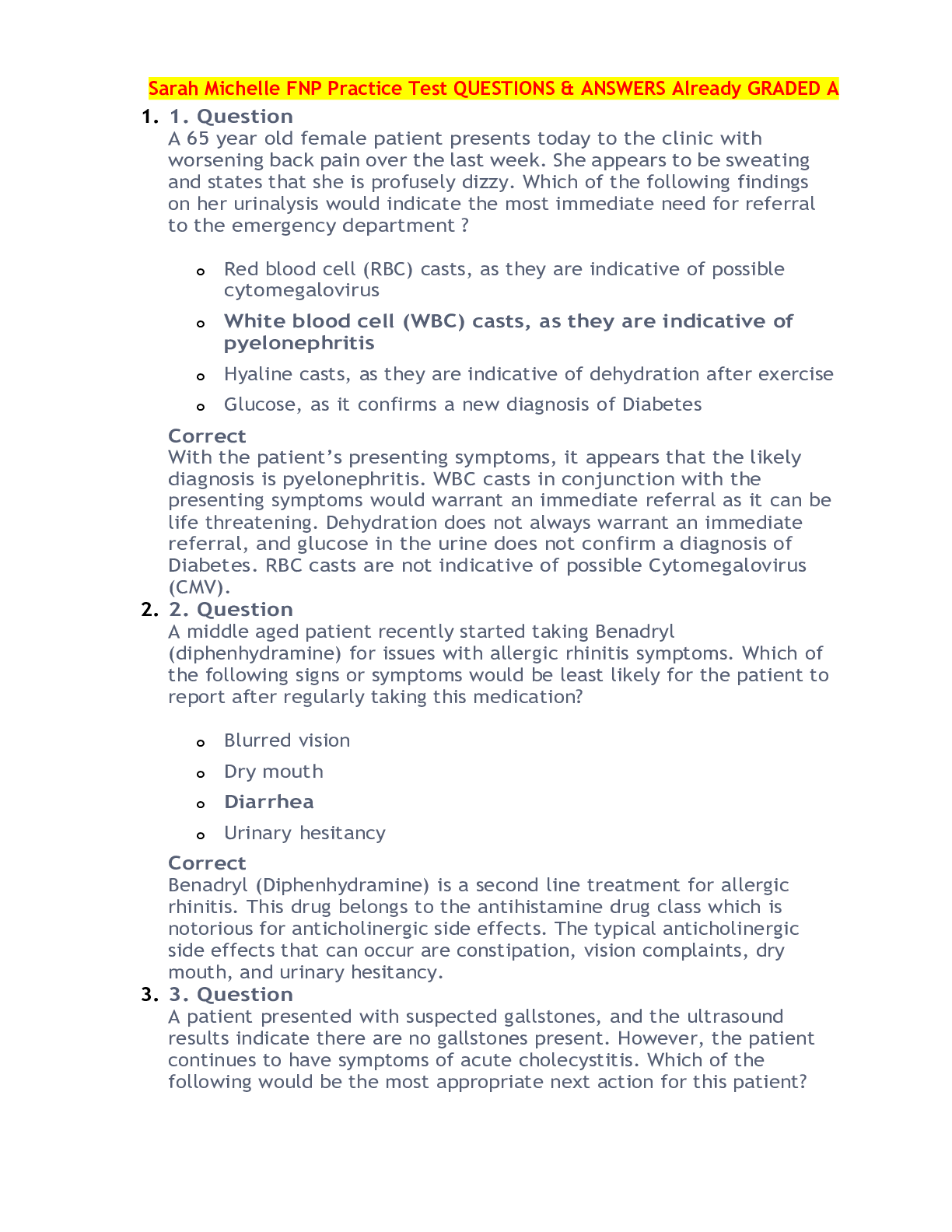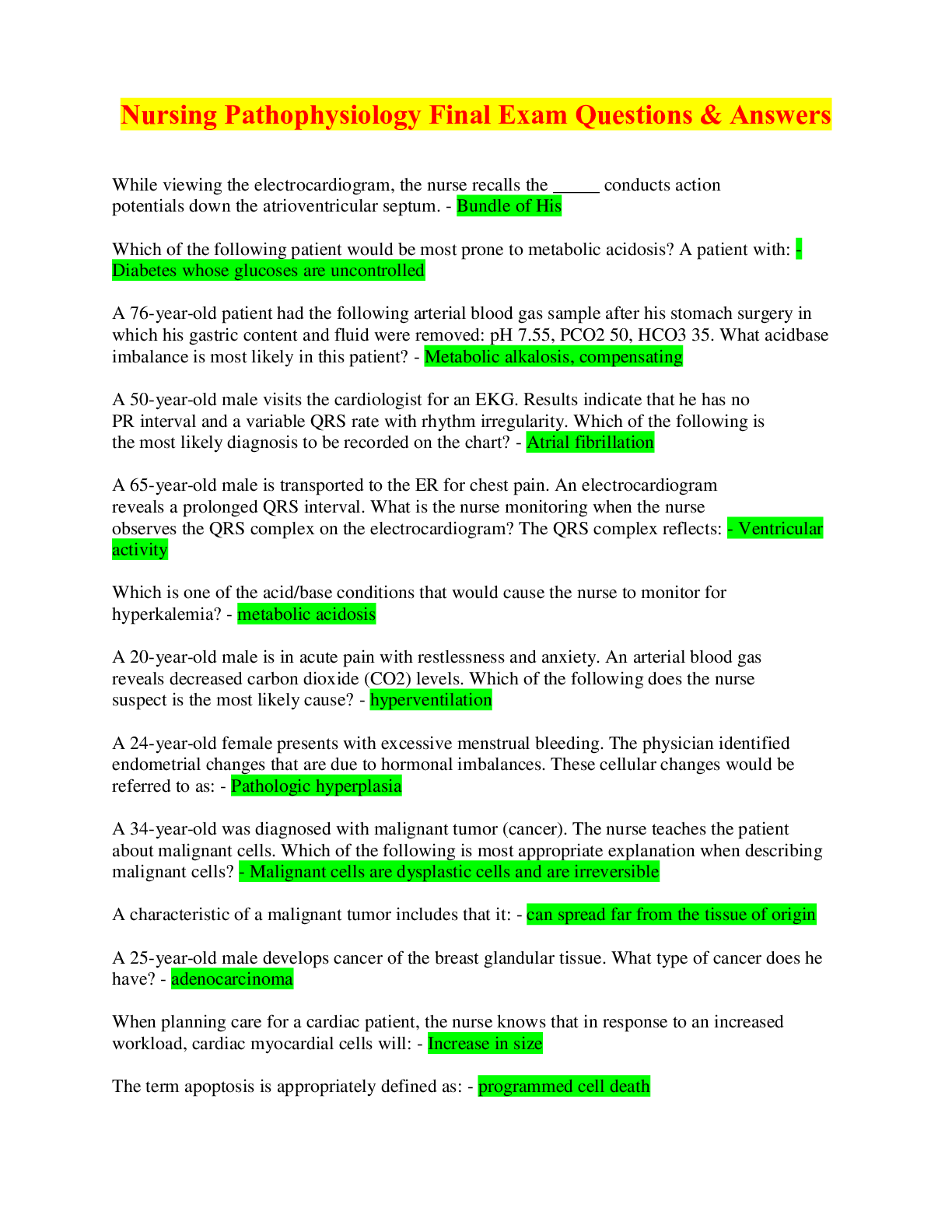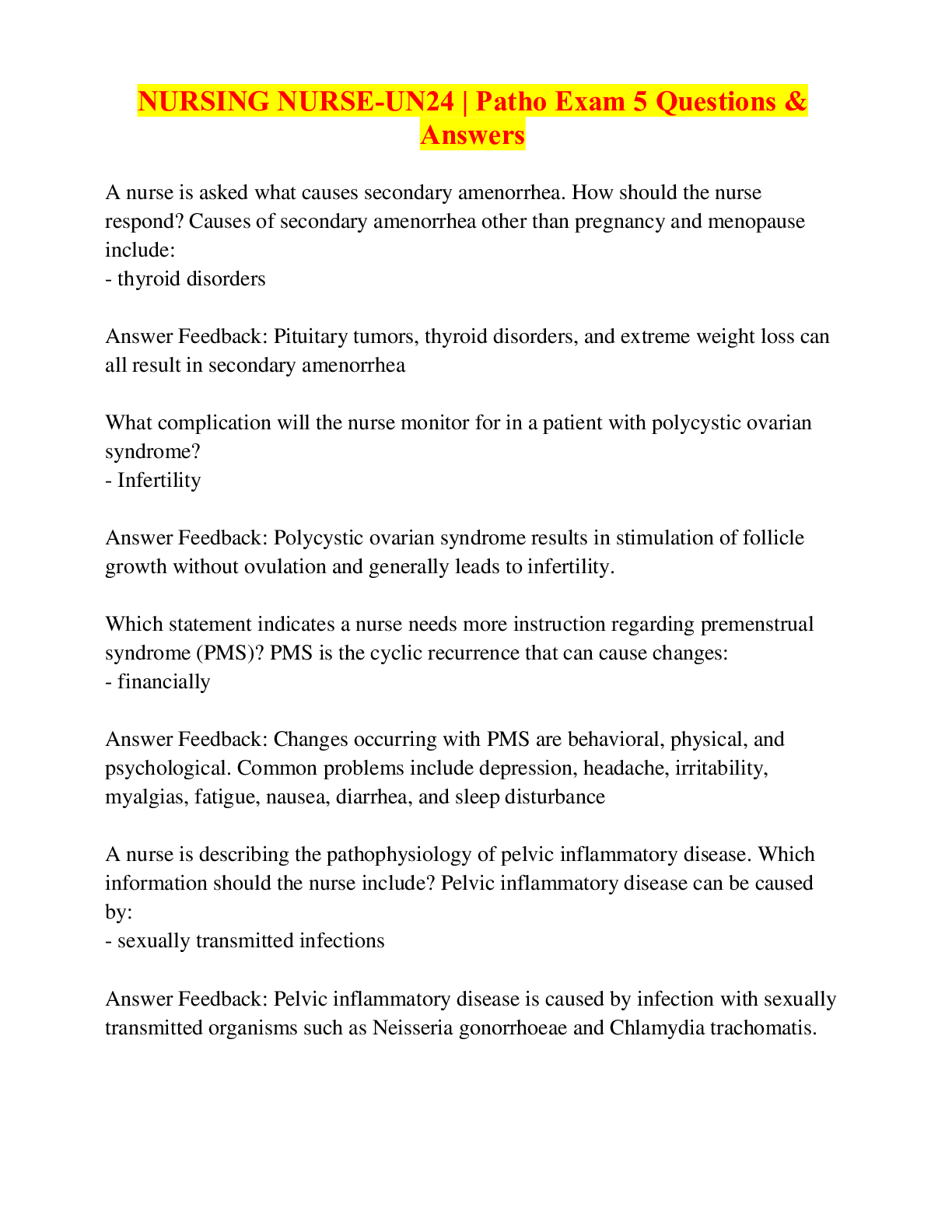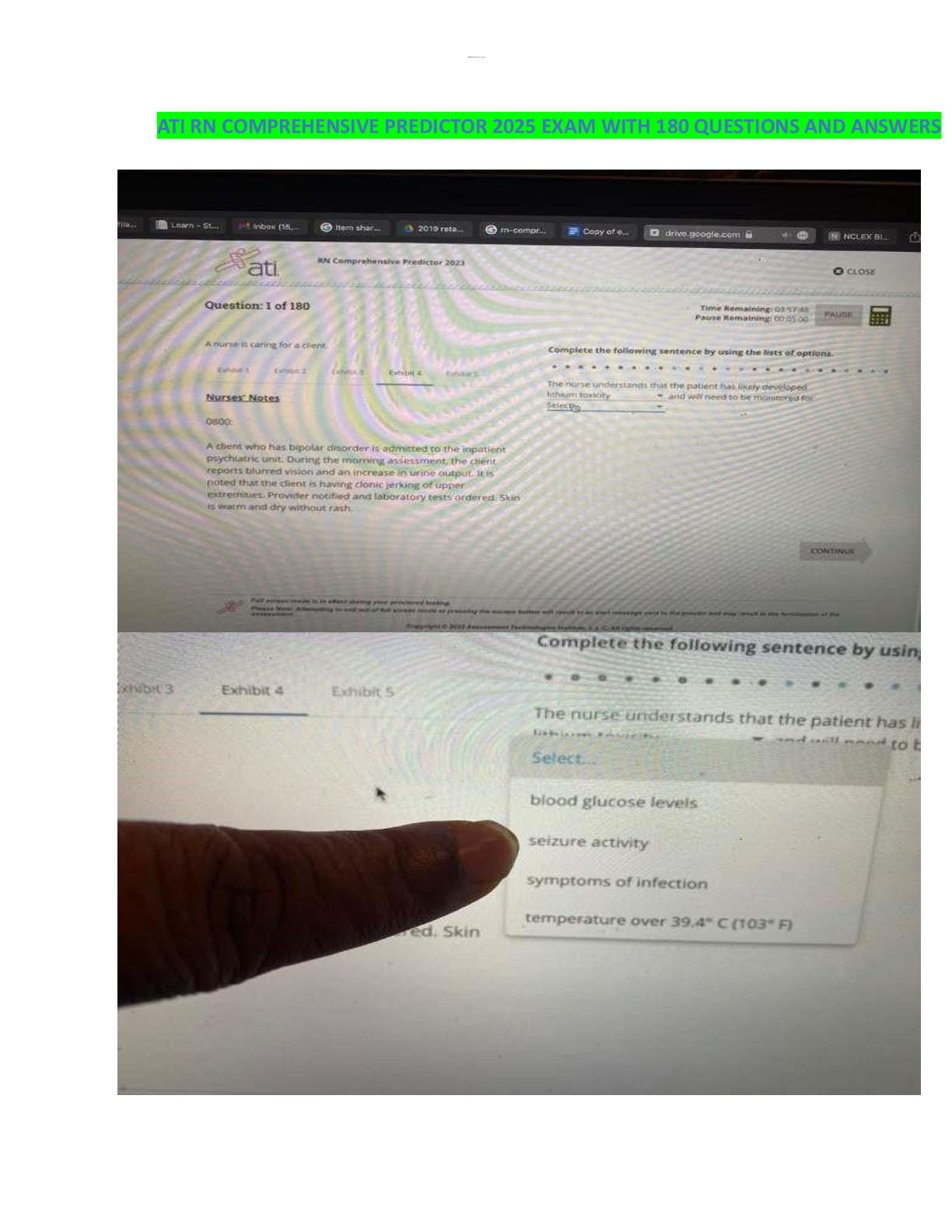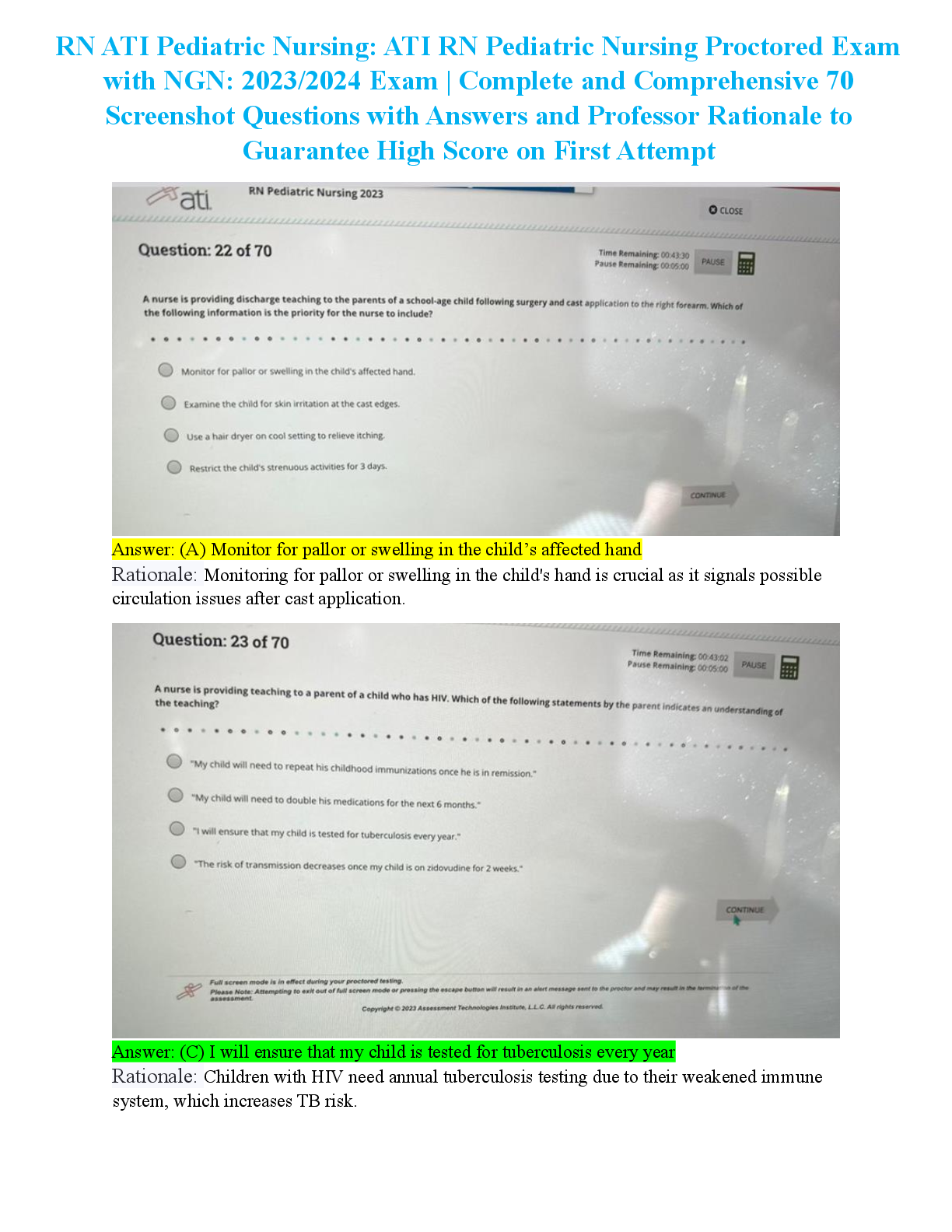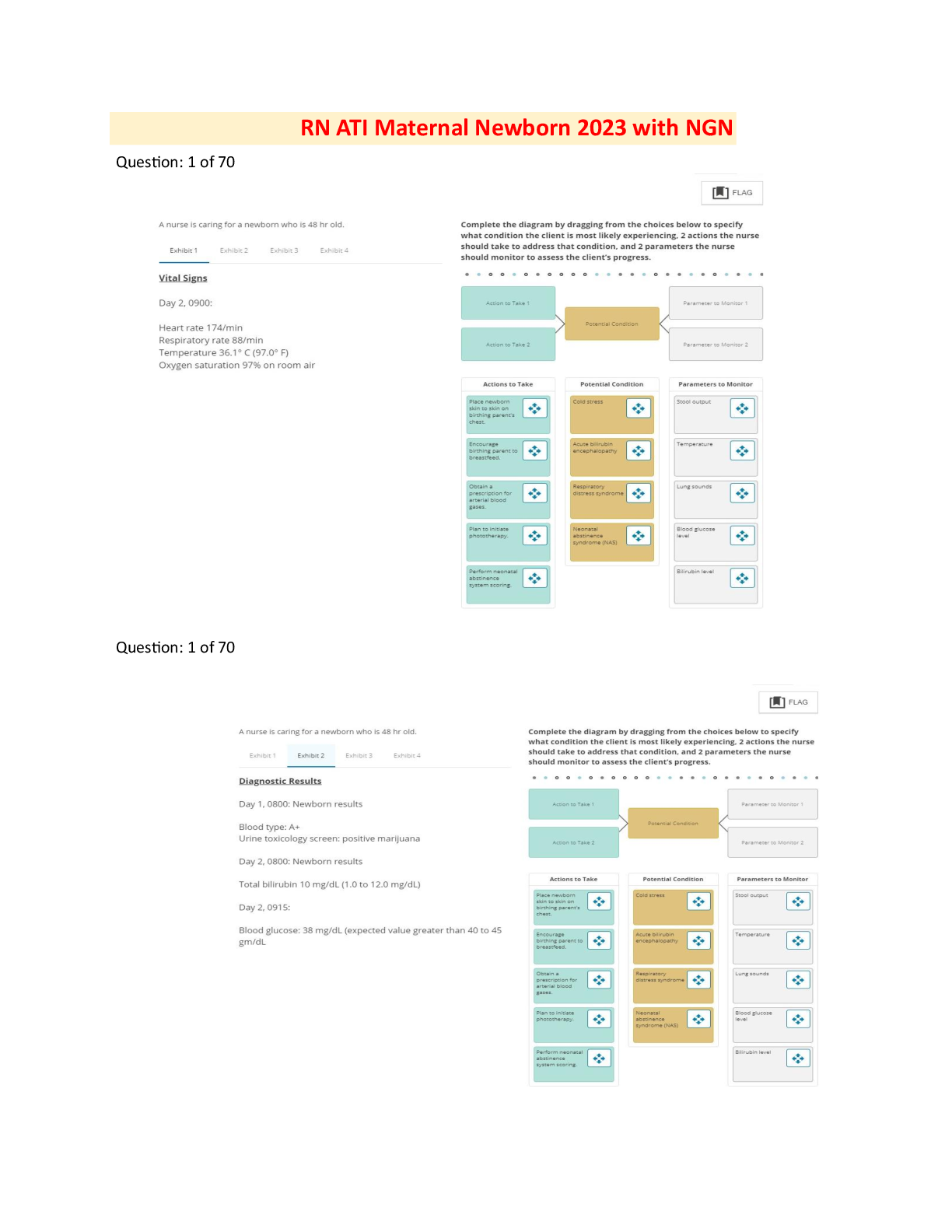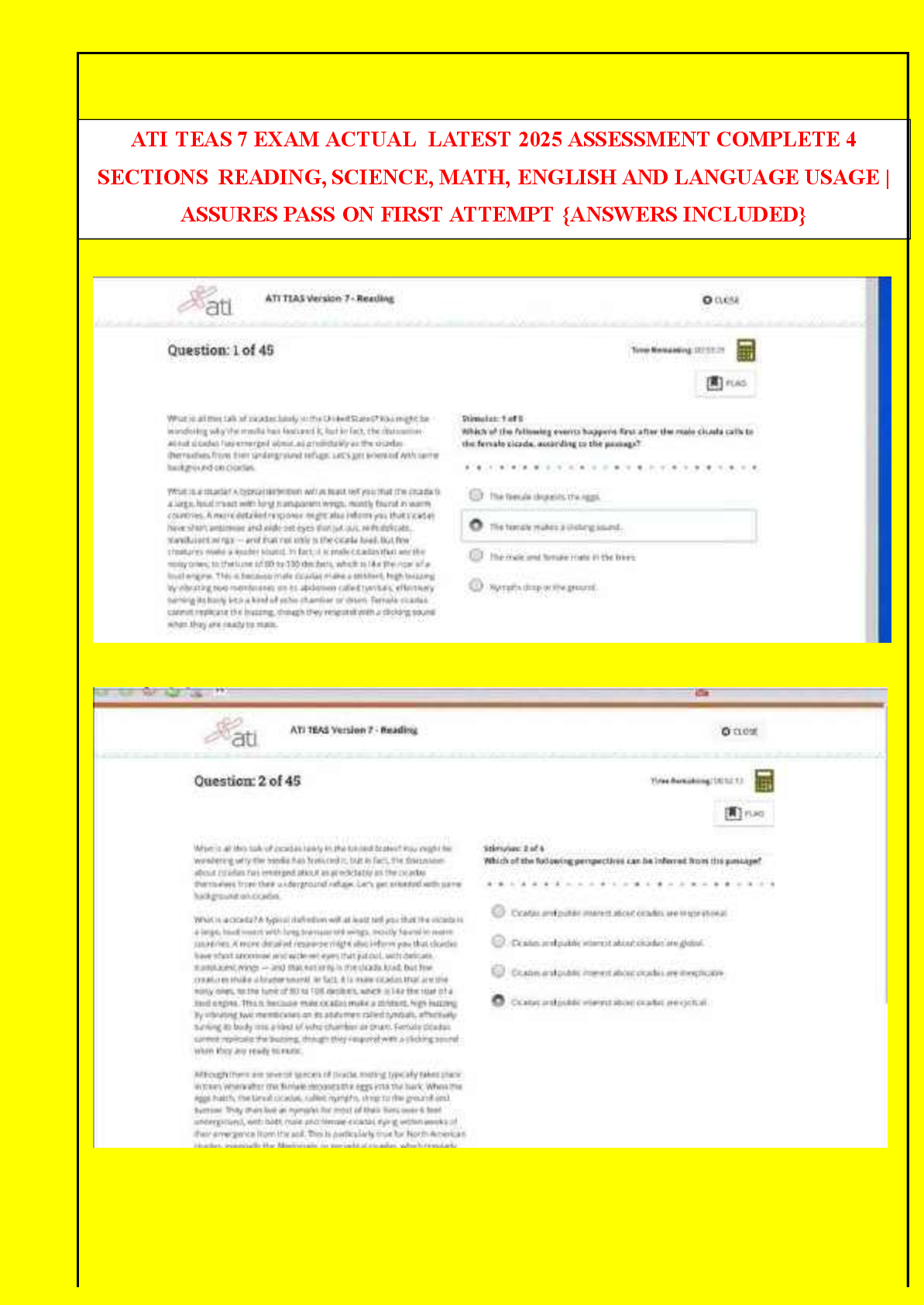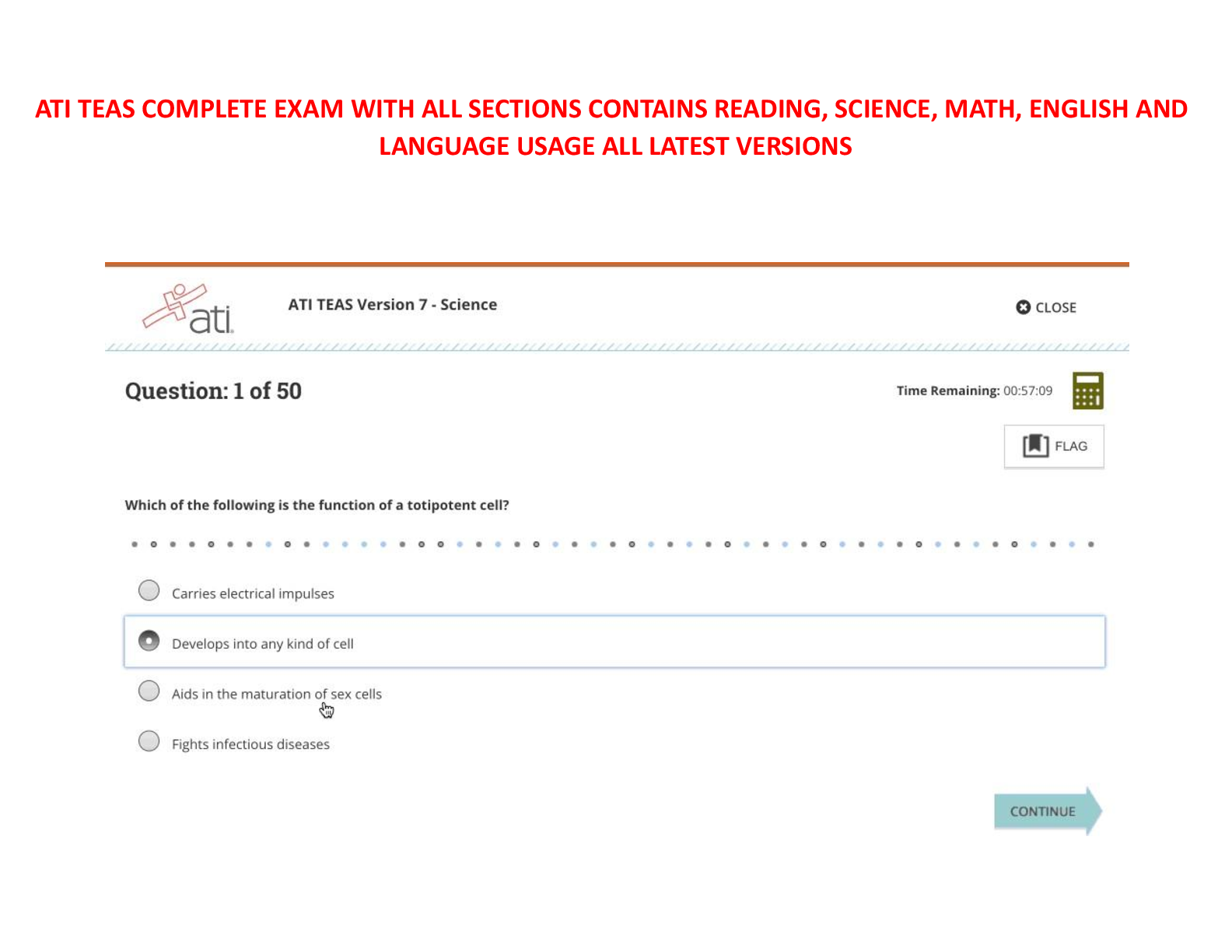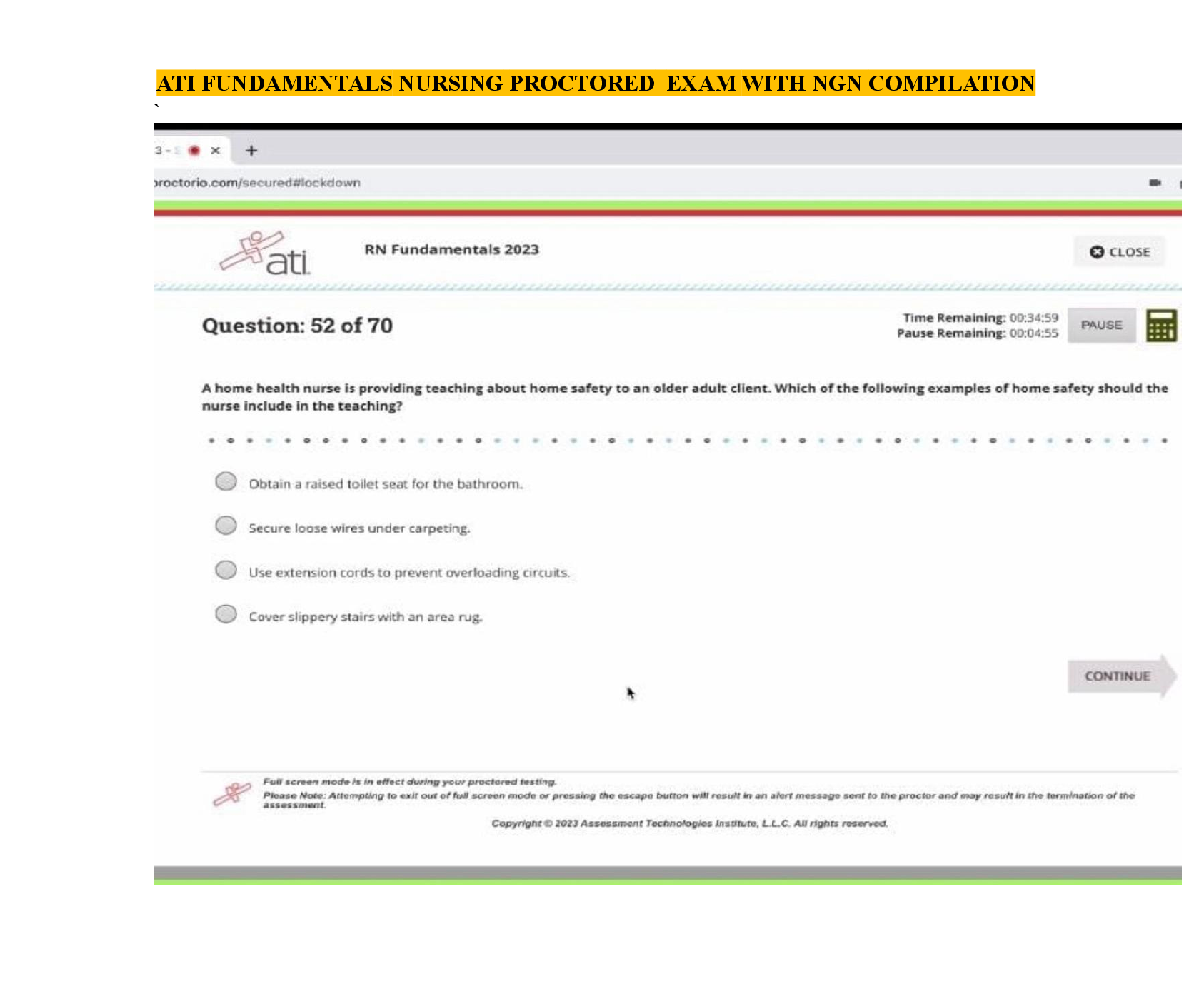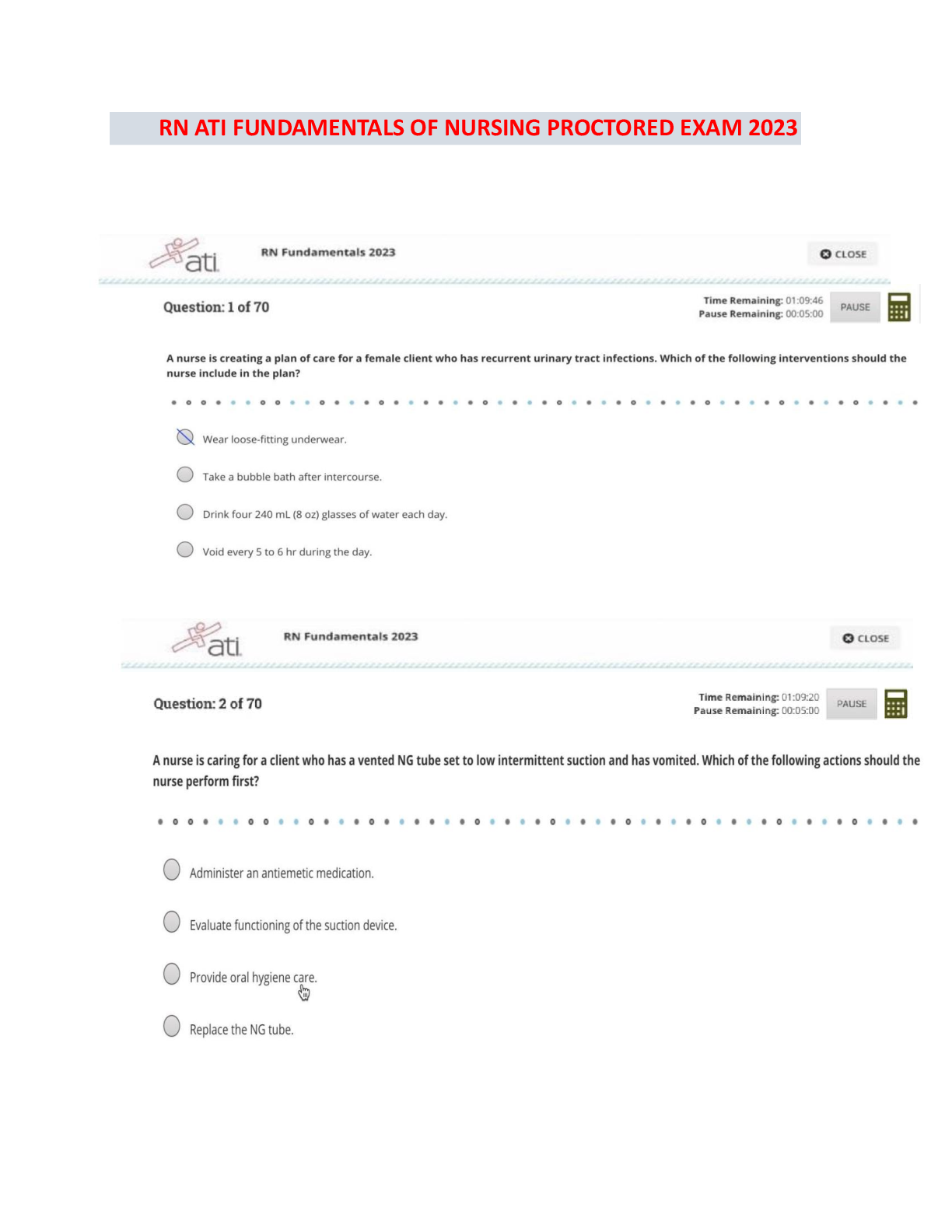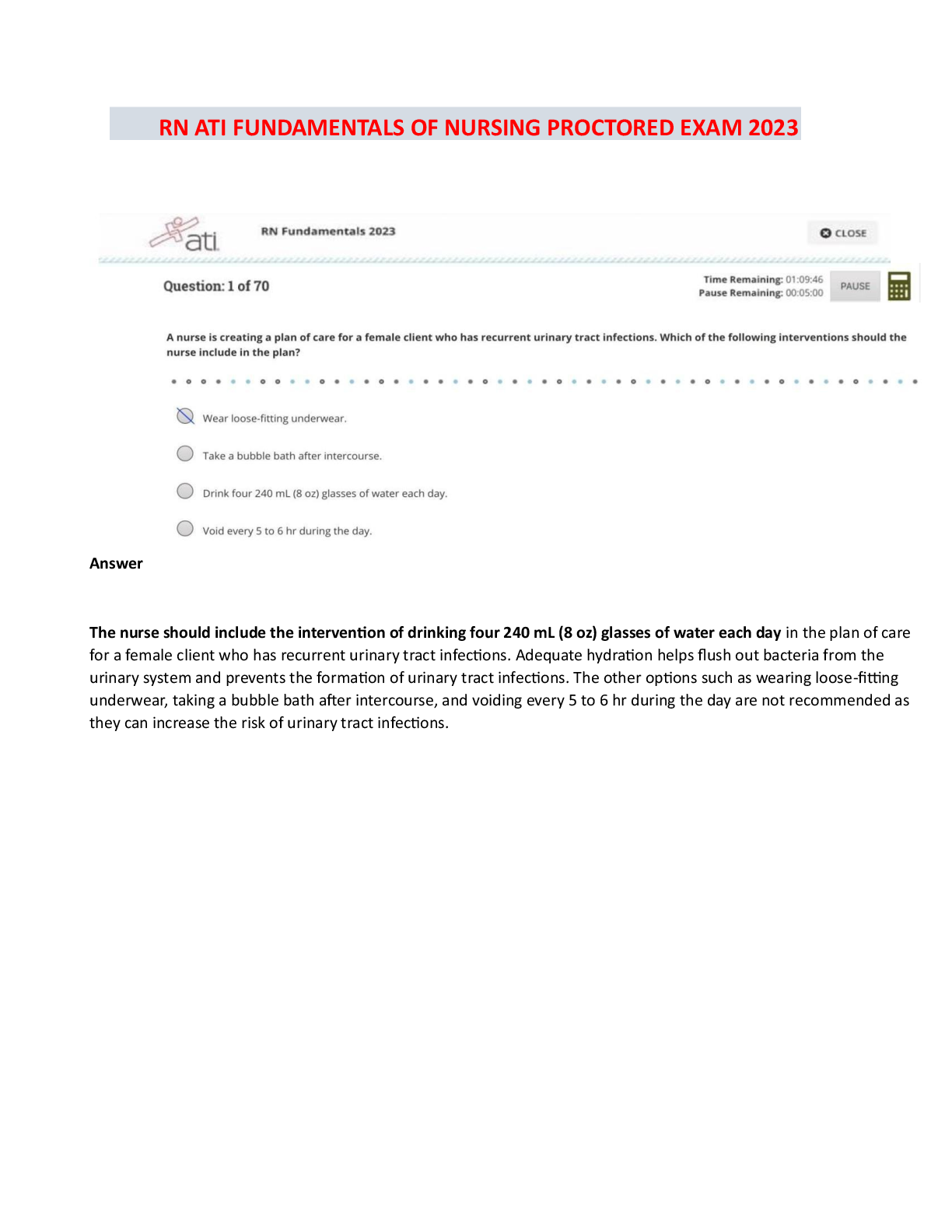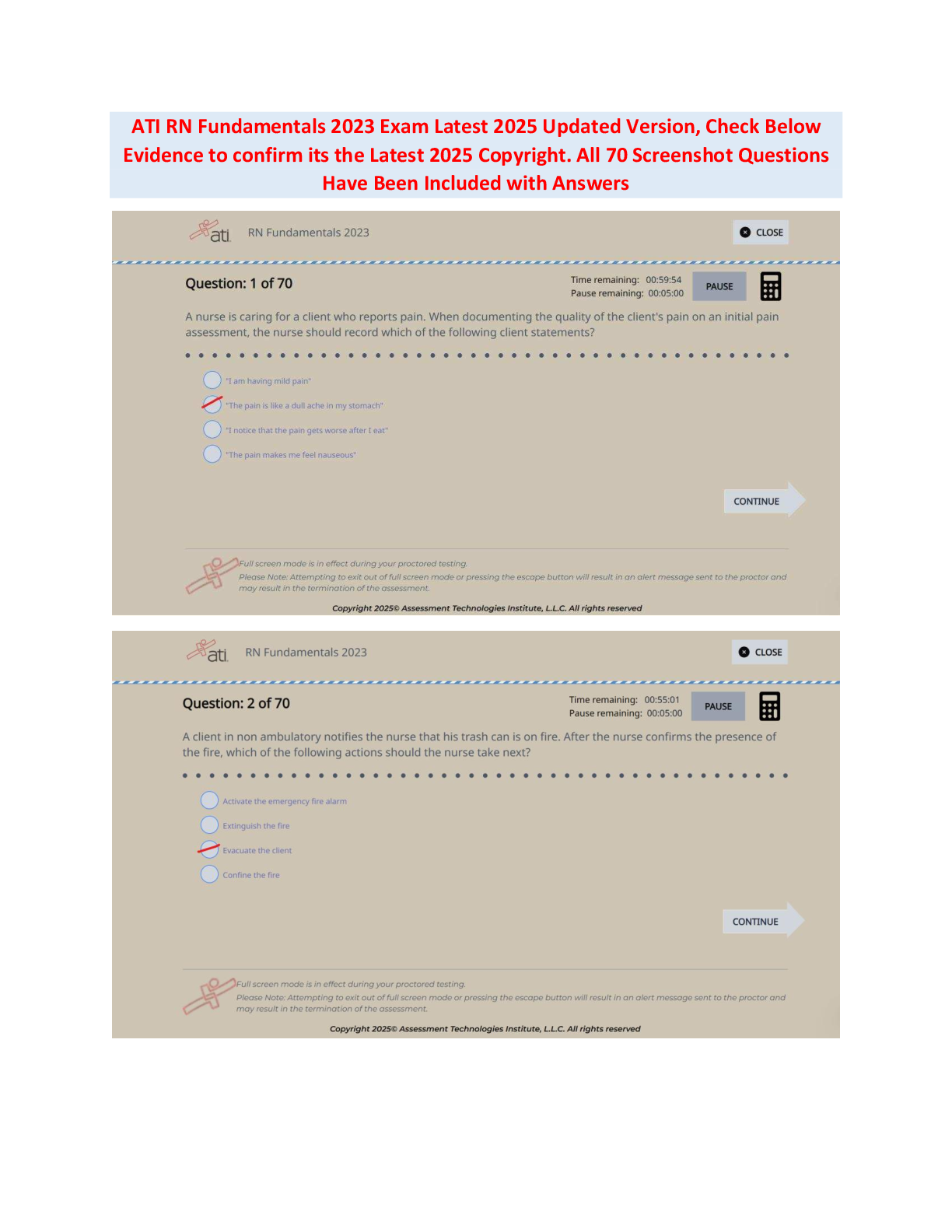Mosby's CT Registry Review 3rd Edition Practice Exam Questions & Answers
Document Content and Description Below
Mosby's CT Registry Review 3rd Edition Practice Exam Questions & Answers-The use of water as an oral contrast material for CT of the abdomen and/or pelvis has several potential advantages, including: ... 1. increased palatability and improved pt comfort 2. better demonstration of enhancing bowel wall 3. no interference with 3D applications - 1, 2, and 3 The use of water as a neg contrast agent is becoming increasingly common for many CT applications for the abdomen and pelvis A pt's BP is measured 140/70 mm Hg. The number 140 represents: a. pressure within arterial vessels during contraction of the heart b. pressure exerted on the chambers of the heart while it is relaxed c. pressure within the arterial vessels while heart is relaxed d. pressure exerted on the chambers of the heart during a contraction - the pressure within arterial vessels during contraction of the heart A(n) ___ CM may be described as one that does not dissociate into charged particles in a solution. - nonionic Ionic contrast materials are salts that form independent particles in aqueous solutions. Nonionic contrast materials don't dissociate into charged particles (ions) when placed in solution. Proper immobilization during a CT procedure may involve the use of: 1. soft, hook-and-loop (Velcro) immobilization straps 2. adhesive medical tape 3. good pt communication - 1 and 3 only The normal range of GFR for men is: a. 50 +/- 14 mL/min/m^2 b. 60 +/- 10 mL/min/m^2 c. 70 +/- 14 mL/min/m^2 d. 80 +/- 10 mL/min/m^2 - 70 +/- 14 mL/min/m^2 Normal GFR for women is: 60 +/- 10 mL/min/m^2 Risk factors for contrast-induced nephrotoxicity (CIN) include: 1. diabetes 2. advanced age 3. hematuria - 1 and 2 only Risk factors for CIN include preexisting compromise of renal function, dehydration, diabetes, myeloma, advanced age, and cardiovascular disease. The reduction in number of infectious organisms w/o a complete elimination is termed: a. medical asepsis b. sterilization c. surgical asepsis d. immunization - medical asepsis accomplished through the use of soap, water, and many other types of disinfectant materials Which of the following is preferred range for pt heart rate for optimal cardiac studies? a. 65-75 bpm b. 75-85 bpm c. 85-95 bpm d. greater than 100 bpm - 65-75 bpm pts with slower heart rates exhibit longer diastolic phases, which yield higher-quality cardiac CT exams. The preferred heart rate for optimal imaging on most MDCT systems is 65 bpm. Newer systems at the 64-slice level and beyond are capable of acquiring adequate cardiac CT images at higher heart rates. [Show More]
Last updated: 1 year ago
Preview 5 out of 31 pages

Loading document previews ...
Buy this document to get the full access instantly
Instant Download Access after purchase
Buy NowInstant download
We Accept:

Reviews( 0 )
$12.50
Can't find what you want? Try our AI powered Search
Document information
Connected school, study & course
About the document
Uploaded On
Nov 21, 2024
Number of pages
31
Written in
All
Additional information
This document has been written for:
Uploaded
Nov 21, 2024
Downloads
0
Views
12


